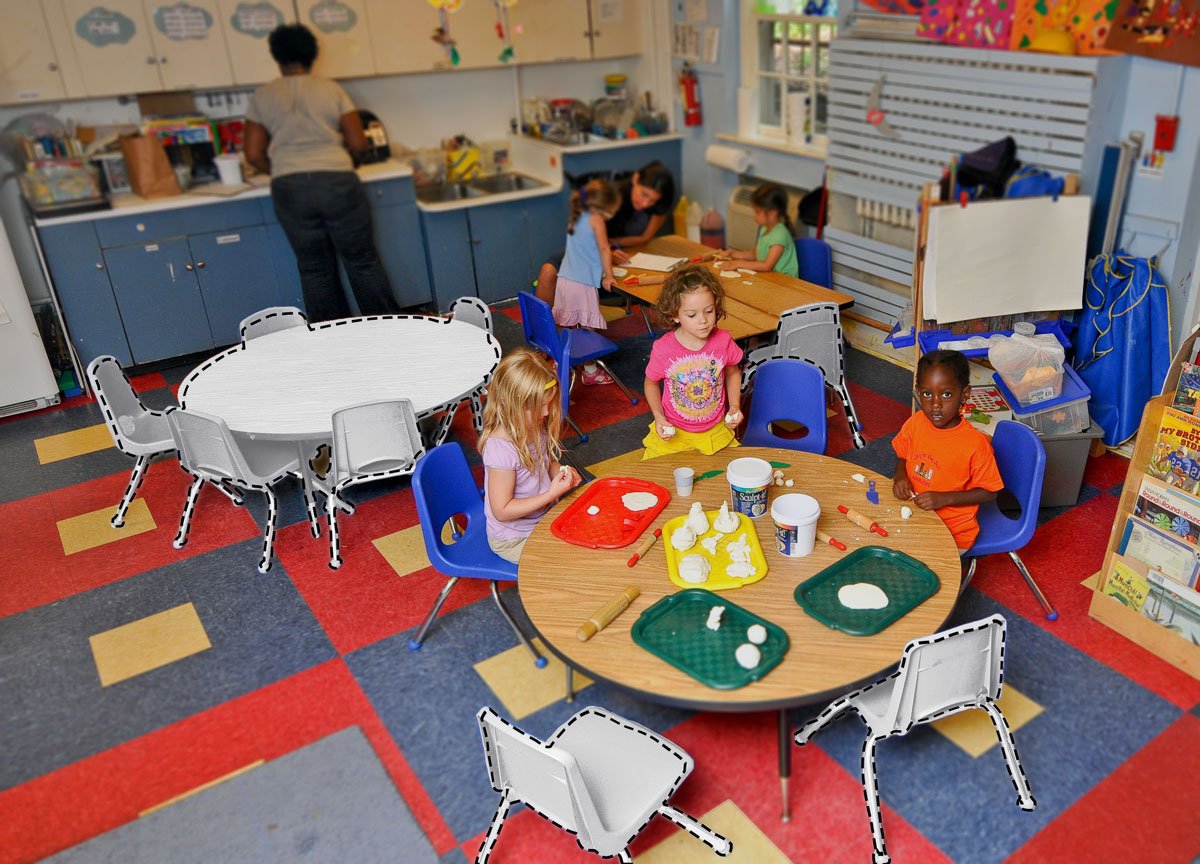
In September 2020, Child Care Aware® of America (CCAoA) released a report entitled Picking Up the Pieces: Building a Better Child Care System Post COVID-19. We compared child care supply data pre-COVID-19 (December 2019) to supply during COVID-19 (July 2020). Unsurprisingly, we found that the supply of licensed child care declined dramatically after the pandemic began. When compared to December 2019, 35% of child care centers remained closed, along with 21% of family child care (FCC) providers in July 2020.
Furthermore, we worked with four child care software management systems to analyze their attendance data pre-COVID-19 through summer 2020. We found similarities when we compared each system. Specifically, attendance dropped sharply in March 2020, as the COVID-19 pandemic began. Then, attendance started to slowly recover from May to August. However, when compared to attendance in January 2020, July’s attendance had still not reached pre-pandemic levels.
Since the release of this groundbreaking report, we have received many requests for updated data from the media, policymakers and those who care about the child care system. They wanted to know:
- Has the supply of child care recovered since the release of our report?
- Has child care attendance recovered?
To answer these questions, CCAoA surveyed child care resource and referral (CCR&R) data partners across the country. This brief survey asked states to record the number of licensed child care centers and licensed FCC providers that were open as of December 2020. Overall, we collected data from 37 states. Half of these states responded to our survey and we retrieved updated, publicly available data from the others.
Additionally, we worked with Early Learning Ventures (ELV), a shared services nonprofit specializing in child care management systems. We featured attendance data among providers that use ELV in Colorado in Picking Up the Pieces. They generously agreed to provide updated attendance data for their Colorado-based providers as of December 2020.
Has the supply of child care recovered since the release of our report?
To answer this question, we calculated the change in child care supply by dividing the number of licensed child care programs open in December 2020 by the number open in December 2019. Using this methodology, we found that 13% of centers and 13% of FCCs were closed as of December 2020. In Picking Up the Pieces, we noted that FCCs had a higher open rate than centers. However, this difference disappeared by the end of 2020.
When examining supply data regionally, we found that the Northeast saw the biggest recovery. However, it appears that for both centers and FCCs in each region, the supply of providers has almost recovered to 2019 levels.
All of this sounds like good news, right? It looks like child care is on track to recover from the COVID-19 crisis. Unfortunately, that’s not necessarily the case. Although child care providers have been reopening, there is a lot of evidence that they are suffering. For example, the National Association for the Education of Young Children (NAEYC) surveyed child care providers nationally toward the end of 2020 and found that 42% reported taking on debt in order to keep their programs afloat.
We at CCAoA have also heard numerous stories of providers who are open but are seeing higher costs and lower attendance. A family child care provider in Virginia reported that she has not had a break since March, but her attendance is still well below capacity. A child care center director in California states that families are not ready to return, and she is struggling to pay staff members. These stories are still common almost a year into this pandemic.
Has child care attendance recovered?
When we analyzed data from ELV, we found that attendance among Colorado providers who use the system is still lagging behind pre-COVID-19 levels. Child care centers are especially impacted despite Colorado returning to its pre-pandemic group sizes and ratio policies. For example, in January, average weekly attendance in Colorado child care centers was 42 children. As of December, the average number had only recovered to around 32 children per week. This translates into big financial losses for center-based programs.
We also looked at the location of ELV providers within the state of Colorado by urbanity (urban, suburban or rural). While average monthly attendance at suburban providers has recovered, attendance is still down for providers in urban and rural areas. Compared to January 2020, average monthly attendance decreased by 24% at urban programs in Colorado and by 19% at rural programs. Again, this translates into lost revenue for providers who were already operating on razor-thin profit margins before COVID-19.
According to the child care data we collected, it appears that licensed child care supply has almost recovered to 2019 levels. However, 13% of both centers and FCCs remain closed, which remains a concern. Furthermore, we found evidence that reopening is only one issue that child care providers are facing. Higher costs related to keeping staff and children safe, along with lower attendance, are putting providers in an impossible situation. Finally, we know that this is a point in time during this pandemic. We don’t know how the child care system will weather the predicted rise in COVID-19 cases due to the new variants or how much longer struggling programs will be able to stay afloat.
To keep child care providers in business, we need continued significant federal investment and for states to use relief funds to implement effective policies that support child care in the long-term in addition to addressing pandemic-related challenges. Check out our recent blog on policy recommendations for federal relief funding for more details. Without this funding, our country will lose many providers. Once COVID-19 is no longer a threat and parents can return to work, there may be fewer child care options available. Lack of child care will make it even more difficult to get the economy running again. No child care, no recovery!
We appreciate our state partners and ELV taking the time to provide us with data. Without their contribution, this analysis would not be possible.






